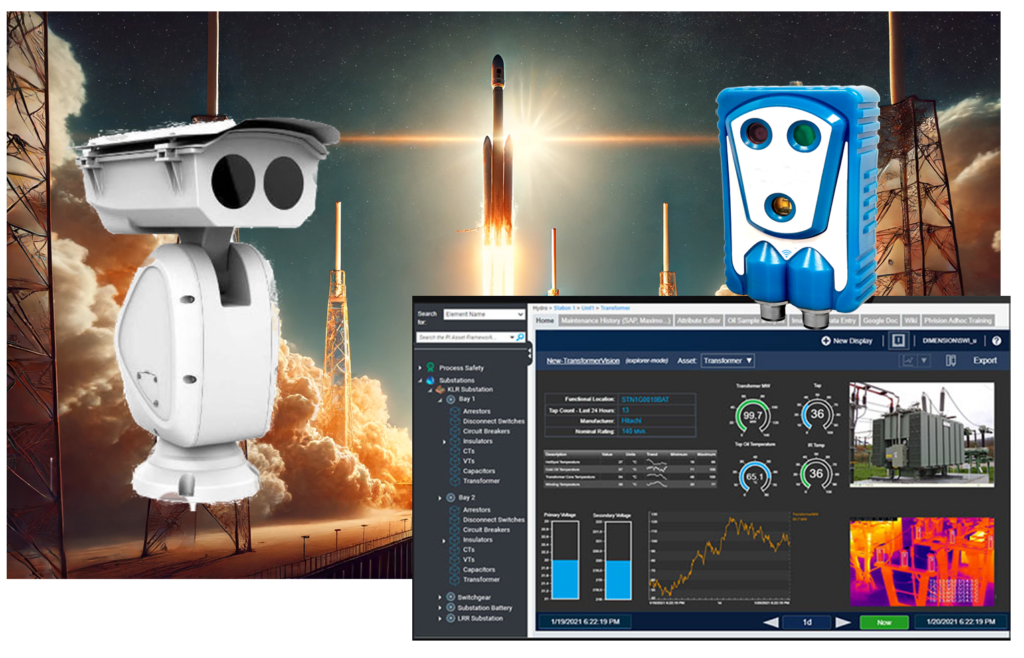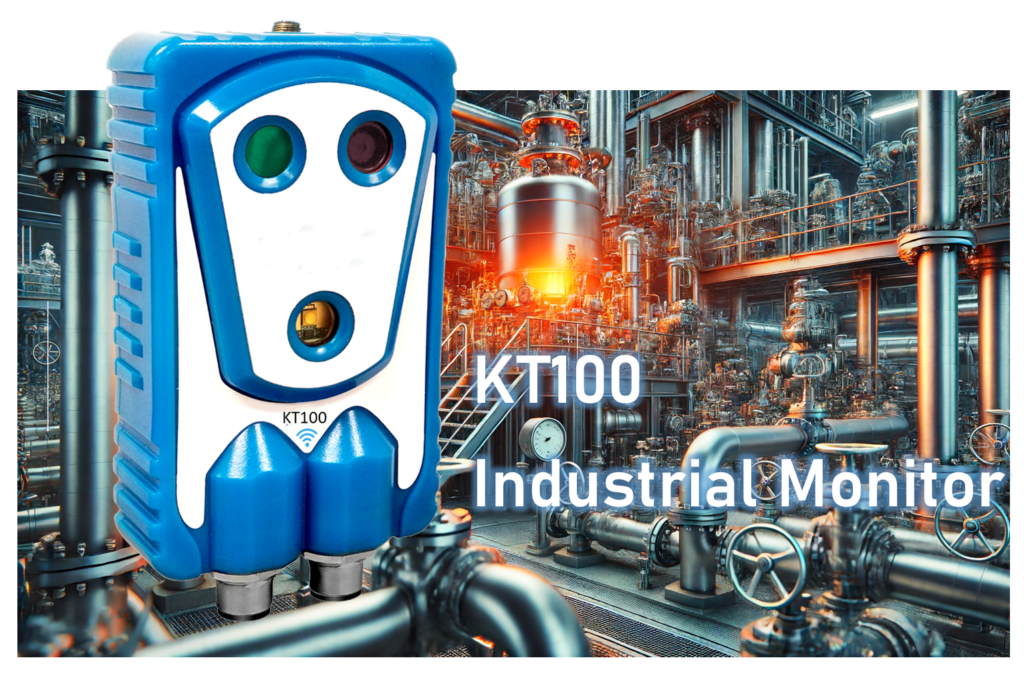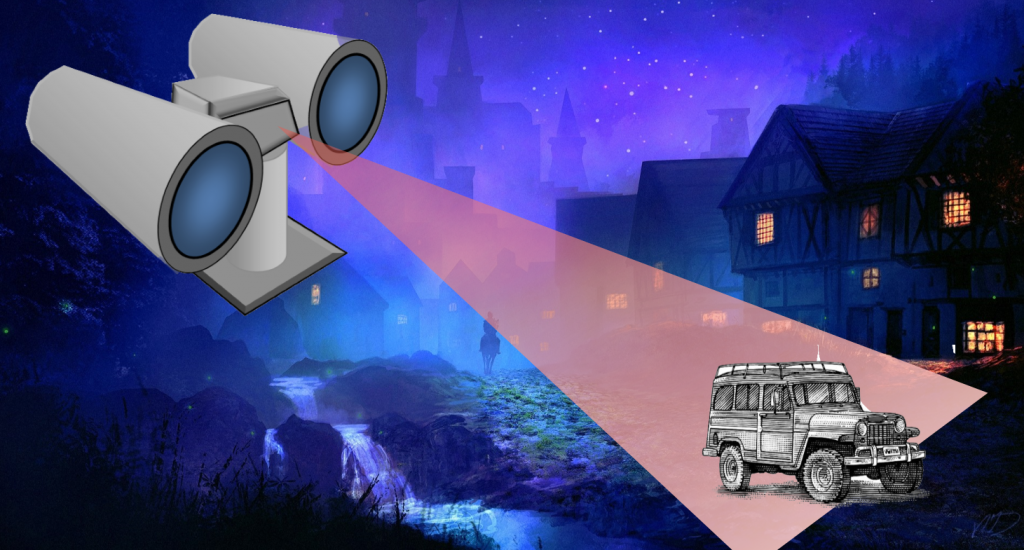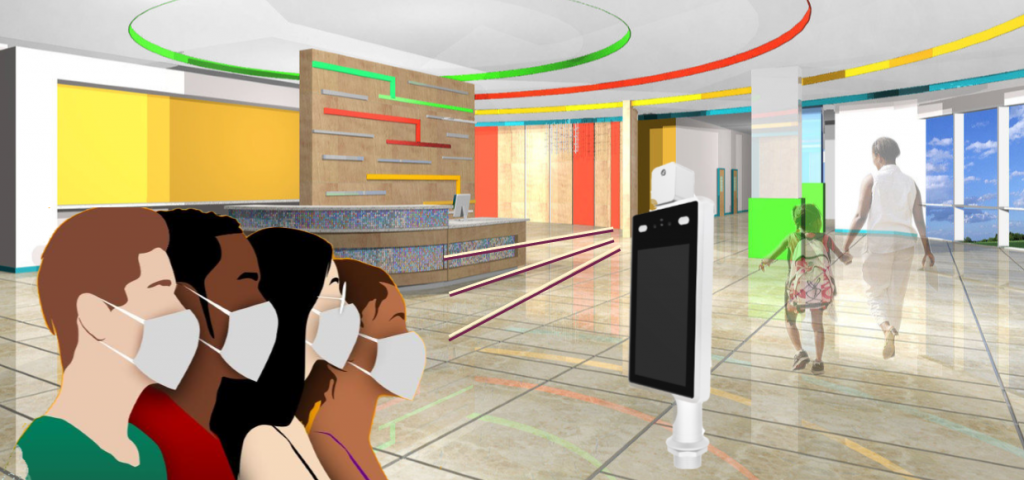Thermal Cameras for Industry, Surveillance, and Health

Thermal cameras are used in industrial manufacturing, revolutionizing equipment health protocols. In surveillance monitoring, they enhance threat detection, improving safety and security.
This article describes and compares thermal cameras and how they are used.
There are two types of Infrared cameras. IR cameras view short-wavelength light reflected from an object, while thermal cameras view mid- to long-wavelength light from the object. Many IP surveillance cameras include IR illuminators that provide illumination. Thermal cameras don’t require illumination, so they can operate at longer distances than IR cameras. We reviewed how thermal cameras work and the best applications for these cameras.
How Thermal Cameras Work
Thermal cameras work by detecting infrared radiation (heat) emitted by objects and converting it into an image that can be visualized and analyzed.
Infrared Radiation Detection: Every object with a temperature above absolute zero (-273.15°C or -459.67°F) emits infrared radiation, which increases in intensity with temperature. Thermal cameras are equipped with sensors that detect infrared radiation.

An infrared camera contains an optical system that focuses infrared energy onto a special detector chip (sensor array) that contains thousands of detector pixels arranged in a grid. The camera uses a unique Germanium lens because standard glass blocks the wavelength of infrared radiation.
Each pixel in the sensor array reacts to the infrared energy focused on it and produces an electronic signal. The camera processor takes the signal from each pixel and applies a mathematical calculation to create a color map of the object’s apparent temperature. Each temperature value is assigned a different color. The resulting matrix of colors is sent to memory and to the camera’s display as a temperature picture (thermal image) of that object.
There are Two Types of thermal Cameras.
Uncooled Thermal Cameras: These cameras use a microbolometer detector that operates at ambient temperature. They are more common, less expensive, and suitable for most applications.
Cooled Thermal Cameras: These cameras use a cryogenically cooled detector, which allows them to detect smaller temperature differences and provide higher-resolution images. They are more sensitive and used in specialized applications.
Applications for Thermal Imaging Cameras
Thermal Imaging Cameras are used in various applications, including industrial process monitoring, surveillance cameras, health monitoring, and long-range surveillance camera applications.
Industrial Process Monitoring with Thermal Cameras

One example of an industrial monitor is the KT100 Industrial Module. It monitors and collects asset health data from remote sites. Thermal monitoring mitigates the risks of failure from overheating assets and connection points. Analytics detect anomalies and provide automatic warnings. The visual camera provides situational awareness in remote locations.
Detection of Heat Signatures: Thermal cameras can detect heat emitted by objects, allowing for the identification of invisible heat patterns and anomalies.
Industrial Maintenance: Thermal cameras are used in industries for predictive maintenance. They identify overheating components, preventing potential equipment failures.
Surveillance Cameras with Thermal Imaging
Thermal cameras play a significant role in surveillance because they can detect heat signatures, making them highly effective in various conditions. They are sometimes integrated with optical cameras to provide long-range detection of targets.
Intruder Detection: Thermal cameras can detect intruders based on body heat, even in complete darkness or through foliage, fog, and smoke. This capability makes them highly effective for perimeter security and monitoring large outdoor areas.
Day and Night Monitoring: Unlike traditional cameras, thermal cameras do not rely on visible light. They provide clear images regardless of lighting conditions, ensuring continuous monitoring and security around the clock.
See Through Smoke and Fog: Thermal imaging can penetrate obscurants like smoke, dust, and light fog, providing clear images where traditional cameras might fail. This is particularly useful in environments where visual clarity is compromised.
Long-Range Optical and Thermal Combination Camera Systems

Thermal and optical IP cameras use different technologies to capture video. Each type of camera system provides a unique role in an IP video surveillance system. Systems that combine thermal and optical cameras offer a synergistic solution for long-range surveillance.
Border and Coastal Surveillance: Thermal cameras with optical cameras are extensively used to monitor borders and coastlines and detect illegal crossings or suspicious activities. Their ability to cover vast areas and function in various weather conditions makes them ideal for such applications.
Learn more about Detection, Recognition, Identification: The New Criteria.
Other long-range camera applications include watching rocket launches, military applications, and city surveillance.
Read more about Long-range Night vision Cameras.
Health Monitoring Using Thermal Cameras

Designed for today’s demands to improve safety in our organizations, these touchless temperature screening devices help maintain a safe environment in schools, hospitals, corporations, and government facilities. The panels are placed in entry areas and are sometimes tied to door access control systems.
Summary of Thermal Camera Systems
Thermal cameras work by detecting infrared radiation (heat) emitted by objects and converting it into an image that can be visualized and analyzed. They are used in manufacturing to detect excessive heat in machinery and in surveillance, where they can detect objects that are over one mile away.
If you would like help selecting the best Thermal Camera System, please call us at 1-800-431-1658 in the USA or 914-944-3425 worldwide or use our contact form.